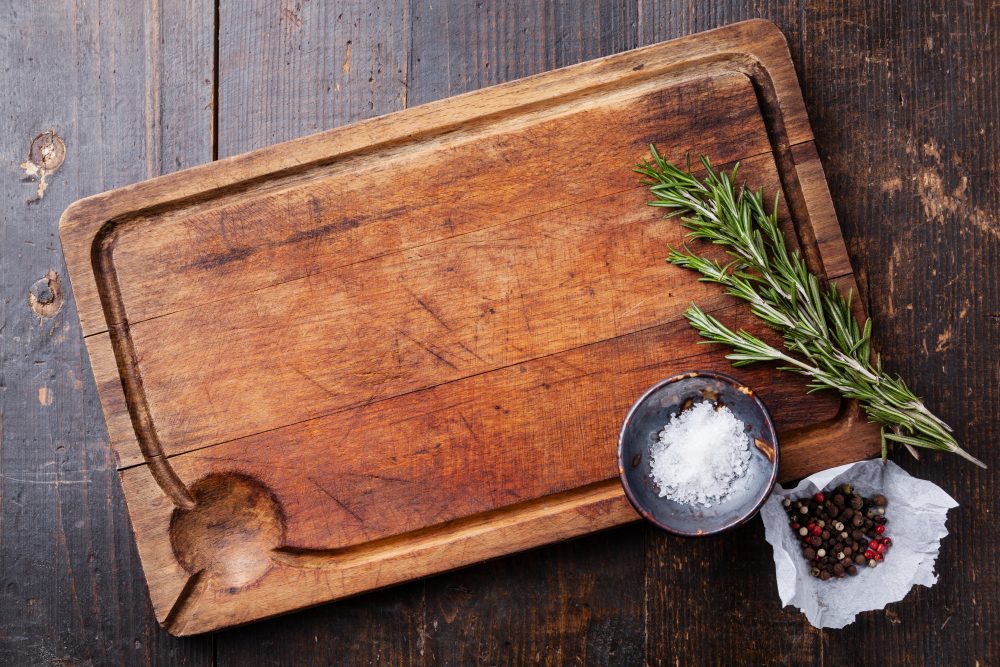Wood
Pros:
- Wooden boards actually absorb bacteria and pathogens. Once absorbed, these dangerous microbials die as the wood dries.
- They’re easy on knives.
- Good wooden cutting boards can last for many years.
- Knives easily grip on a wood surface, meaning that you can have more controlled cuts.
Cons:
- They shouldn’t be put through a dishwasher, meaning you have to do lots of hand washing.
- Harder to store and move around.
Tip: You should have two cutting boards, one for produce, breads and food that can be eaten raw; use the other one for raw meat. If you have wooden boards, keep them clean and dry when you’re not using them. After washing, you can salt the surface of the board and leave it overnight to keep it dry.
Plastic
Pros:
- Easy to clean and sanitize.
- Easy to store.
Cons:
- Knife scars happen easier, and the scars are often jagged cuts.
- Scarred areas of plastic boards may create a “safe area” for bacteria.
- Plastic boards can be slick, meaning your knife has less control; however, some plastic boards come with a gripping texture.
Tip: If stuff is catching on the scars of your plastic cutting board, throw it out.
Why aren’t we talking about glass or marble boards?
Glass or stone cutting surfaces should be avoided because they will quickly dull even the best knives. They may be easy to clean, but they are simply a bad choice for the home kitchen.
An analysis of 300 chicken breasts purchased across the US found that almost all of the chicken had harmful bacteria, including organic brands. Proper food preparation, which often begins on the cutting board, is important for keeping the family safe.
Source: Consumer Reports




No Comment